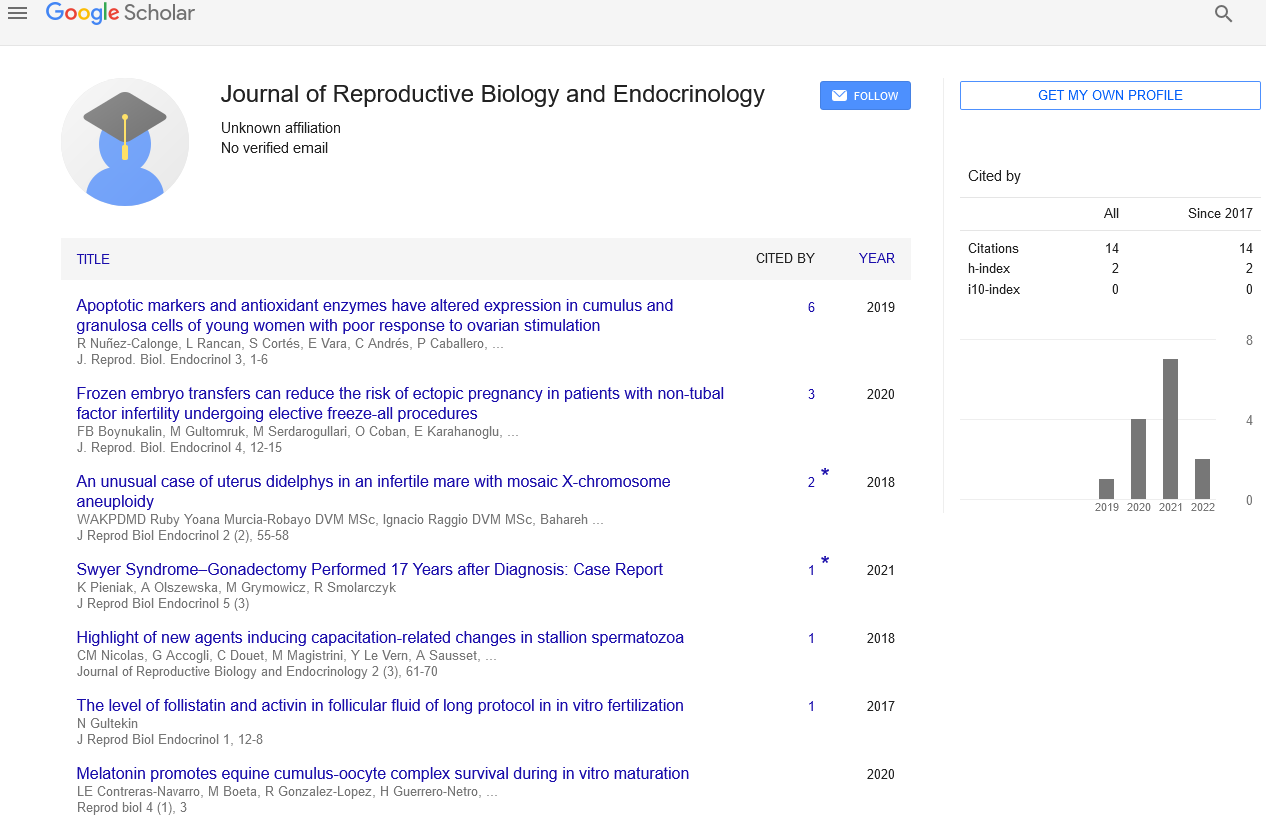Hormonal control of spermatogenesis
Andhra University
, India, Email: anusiri1104@gmail.comAndhra University
, India, Email: anusiri1104@gmail.comReceived: 10-Jul-2020 Accepted Date: Jul 23, 2020; Published: 30-Jul-2020
This open-access article is distributed under the terms of the Creative Commons Attribution Non-Commercial License (CC BY-NC) (http://creativecommons.org/licenses/by-nc/4.0/), which permits reuse, distribution and reproduction of the article, provided that the original work is properly cited and the reuse is restricted to noncommercial purposes. For commercial reuse, contact reprints@pulsus.com
Introduction
Growth, maintenance and functioning of Secondary sexual organs epididymis, vasa deferentia, penis and accessory glands prostate, seminal vesicle, cowper ’ s glands are under the control of male hormones testosterone secreted by leydig cells of testes. Similarly, growth, maintenance and functioning of somniferous tubule and leydig cell are regulated by follicle stimulating hormones of anterior pituitary.
Luteinizing hormone (LH) and follicle-stimulating hormone (FSH) causes the testes to release testosterone and sperm. The pituitary gland, sited in the brain, makes these hormones.
Steroid function in spermatogenesis
Testosterone and its metabolites, dihydrotestosterone and estradiol , are collectively referred to as the sex hormones. This is because of their primary role in the regulation of gonadal and germ cell development in both males and females as well as in the sexual differentiation of males. In the male, T assumes the lead role in both morphological development and reproductive function, although E2 and its receptor estrogen receptor (ER) α , but not ERβ , clearly play some role in the maintenance of male fertility [1]. However, these effects appear to be indirect and secondary. Disruption of Er β has no apparent effect in males, as XY animals are morphologically normal and fertile. In the human reproductive process, two kinds of sex cells, or gametes (GAH-meetz), are involved. The male gamete, or sperm, and the female gamete, the egg or ovum, meet in the female's reproductive system [2, 3]. When sperm fertilizes (meets) an egg, this fertilized egg is called a zygote (ZYE-goat). Initial observations of Er α null male mice suggested a primary role for this gene in regulating spermatogenesis, as animals presented with reduced fertility and dramatically decreased epididymal sperm counts [4]. However, it is now clear that the primary function of ERα in the male reproductive tract is the regulation of luminal fluid reabsorption in the rete testis and efferent ducts linking the testis and epididymis. As might be expected, males homozygous for mutations in both Er α and β have a similar phenotype to males.
While androgens have a positive regulatory influence on differentiating germ cells, there is a wellestablished negative effect of androgens on the differentiation of spermatogonial stem cells. This observation stems from work aimed at understanding the prolonged suppression of spermatogenesis in men following radiation or chemotherapy treatment for cancer. Following treatment, spermatogonia are present, but fail to proliferate or differentiate. It was found that in irradiated rats, stimulation of spermatogenesis occurred following treatment with GnRH agonist or T, which both act to suppress intratesticular T concentration. This work was later extended to show that a GnRH antagonist stimulates spermatogonial proliferation and inhibits apoptosis following irradiation. In addition, recent studies have shown that this effect is because of inhibition of androgen function, as the androgen antagonist flutamide stimulates, while testosterone inhibits, spermatogonial proliferation and differentiation. A similar effect has been demonstrated in juvenile spermatogonial depletion (jsd ) mice, whose germ cells regress to a spermatogoniaonly phenotype following the first wave of spermatogenesis. Stimulation of spermatogonial proliferation and differentiation, along with completion of spermatogenesis, is observed in the testes of these animals following treatment with GnRH antagonist or flutamide [5]. The stimulatory action of GnRH antagonist is prevented by coadministration of T, while flutamide reverses the repressive effect of testosterone.
REFERENCES
- K Rehman, E Beshay, S Carrier. Diabetes and male sexual function. J Sex Reprod Med 2001; 1:29-33.
- RA Ward, P Raiche, HM Fidler. Results of a national needs assessment for continuing medical education of family physicians related to erectile dysfunction and/or male sexual dysfunction. J Sex Reprod Med 2002; 2: 55-60.
- P Assalian, M Ravart. Management of professional sexual misconduct: Evaluation and recommendations. J Sex Reprod Med 2003;3(3):89-92.
- Dietzel E. Sperm-oocyte interaction. J Reprod Biol Endocrinol. 2018;2(2):26-27.
- Moros-Nicolás C, Accogli G, Douet C, et al. Highlight of new agents inducing capacitation-related changes in stallion spermatozoa. J Reprod Biol Endocrinol. 2018;2(3):61-70.





